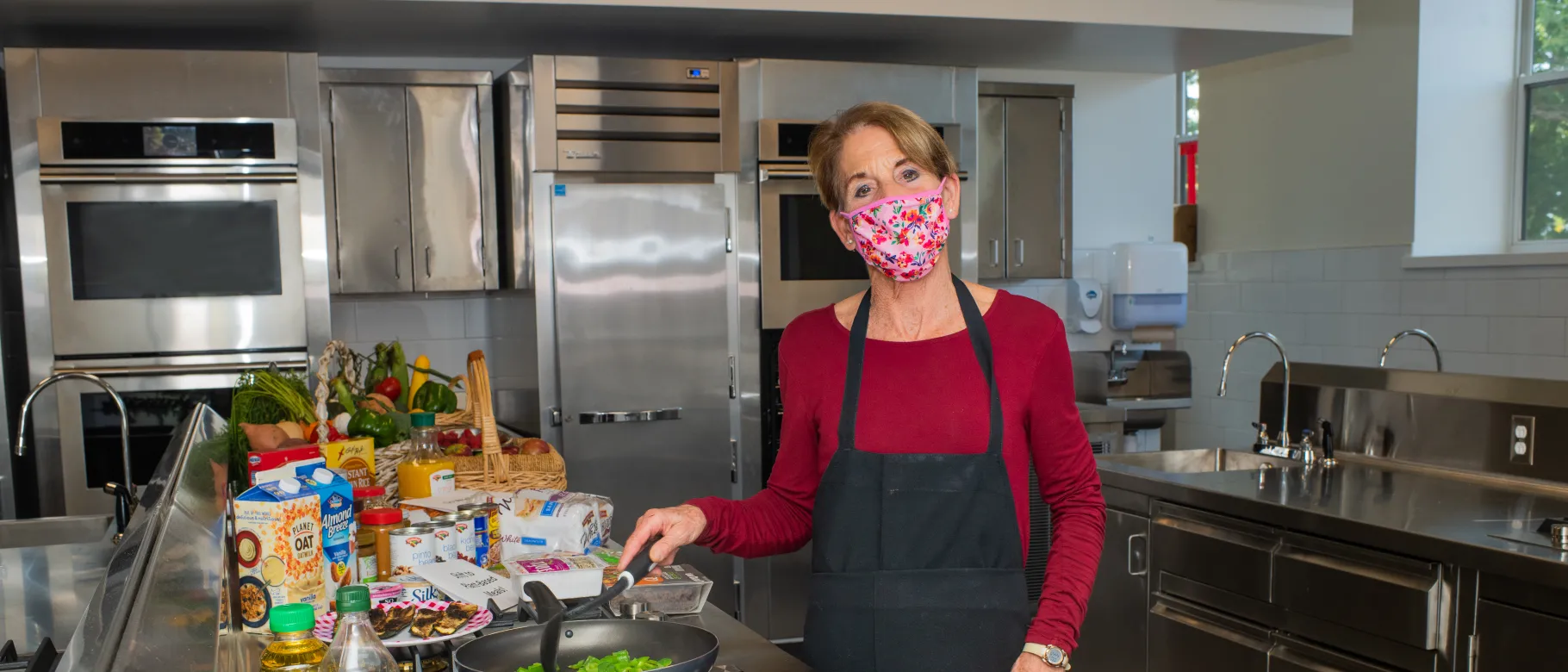Take control of your kitchen, and your health, this season with these holiday cooking tips

It may seem impossible to believe, but the holiday season is nearly here. In this most unusual of years, Thanksgivings and other holiday gatherings will be limited. Some will celebrate with their families; others may partake alone; and others may forgo traditional festivities entirely.
But one thing is more than likely sure: most, if not all, of us will probably spend a good amount of time in the kitchen these next couple of months, especially as a new wave of the novel coronavirus pandemic starts to surge. And, whether or not you are cooking a turkey for Thanksgiving, a ham or feast of seven fishes for Christmas, or a rack of lamb for New Year’s Eve, it is important to follow food safety guidelines and practice good kitchen etiquette to ensure you and your loved ones are safe.
After all, no one wants a case of salmonella for Christmas.
UNE News recently sat down with Anne-Marie Davee, M.S., RDN, LD, assistant clinical professor in the Department of Nutrition within the University’s Westbrook College of Health Professions, to discuss best practices for preparing your holiday meals.
First and foremost, in light of COVID-19 guidelines, Davee says to keep your holiday gatherings to less than 10 people, to wear masks, and to wash your hands often to prevent spread of the coronavirus.
For the cooking, Davee recommends following the U.S. Department of Agriculture’s (USDA) key food safety principles, known as the “Four C’s”:
- Clean
- Cook
- Chill
- (Don’t) Cross Contaminate
A clean kitchen is a safe kitchen, Davee advises.
“Clean, clean, clean and sanitize,” she says. “You cannot wash your hands too often and regularly wipe down all counter tops and food contact surfaces. Wash all fresh fruits and vegetables thoroughly before consuming.”
But there’s one thing you don’t need to wash: the turkey. It’s a common myth that washing poultry before cooking will prevent foodborne illness. The opposite is actually true, according to the U.S. Centers for Disease Control and Prevention (CDC), as the running water could cause juices from the meat to spread to other areas of the kitchen such as utensils and countertops.
“There is no need to wash the outside of uncooked poultry or any raw meats and seafood,” Davee says. “These foods are going to be cooked to the proper temperatures and this will destroy any bacteria.”
Speaking of bacteria, it is important to remember the “danger zone” for high bacterial growth in food items. This occurs between 40 and 140 degrees, so foods should be stored below or cooked above that range.
It important to cook meats, poultry, and seafood to the appropriate internal temperature. That means between 145-160 degrees for beef, 145 degrees for pork and seafood, and 165 degrees for poultry such as chicken and turkey.
“Use a meat thermometer, as appearances can be deceiving,” Davee advises.
For the perennial question: to stuff or not stuff the turkey? Davee recommends baking the stuffing (or dressing) separately for optimum food safety. But, if you wish to stuff the bird, Davee suggests preparing the stuffing in advance and chilling it before placing it inside the turkey.
“Never put warm stuffing into a chilled, uncooked turkey,” Davee cautions. “This is a perfect medium for bacterial growth. Cook the stuffed turkey well making sure the internal temperature reaches 165 degrees.”
Food storage is also an important component of food safety, Davee says. She warns that it is not appropriate to leave candies, pastries, and snack foods out for people who pass by to take and that foods should never stay out at room temperature for more than two hours.
All food should be stored in the refrigerator or pantry in covered and sealed containers, and foods that are chilled should be kept in shallow containers.
Finally, Davee states avoiding cross contamination is critical in preventing the spread of foodborne diseases such as salmonella and E. coli.
“Use separate cutting boards, platters, and utensils for raw meats, poultry, and seafood than you use for fresh fruits and vegetables,” she says. “Store raw meats, poultry, and seafood in a separate drawer or at the bottom of the refrigerator so that they don't drip on ready-to-eat foods.”